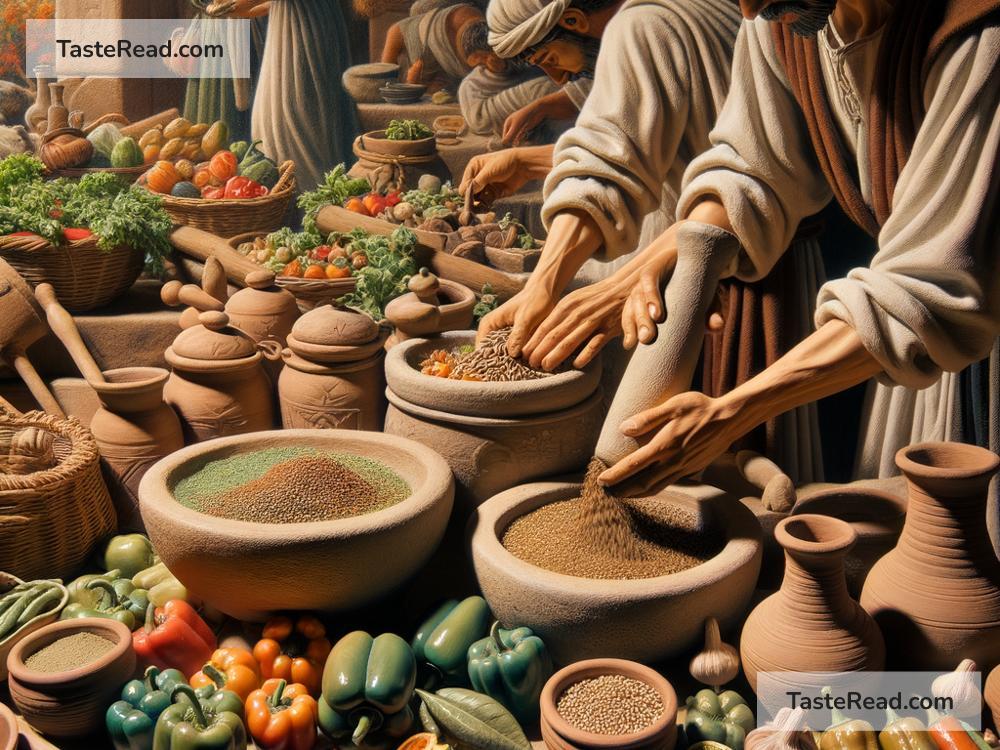Origins of the First Stuffed Pepper in Ancient Tales
Stuffed peppers are a beloved dish in many cultures around the world. The combination of a hollowed-out pepper filled with tasty ingredients is both simple and delicious. While today’s versions of stuffed peppers can include everything from meat and rice to cheese and vegetables, the origins of this dish reach far back into ancient times. Stories and legends about stuffed peppers show us how food has long reflected creativity, necessity, and community. Let’s explore the roots of this iconic dish and how it may have come to be.
Ancient Farmers and the Rise of Peppers
Peppers, especially bell peppers, come from Central and South America. Thousands of years ago, indigenous peoples around these regions began farming peppers as a staple crop. Over time, peppers spread to other parts of the world, largely thanks to trade and exploration. The Spanish and Portuguese explorers encountered peppers in the Americas and brought them back to Europe in the 15th and 16th centuries. Slowly, peppers became a favorite vegetable in many cuisines across the globe.
People have always looked for ways to make the best use of their food resources. Hollow vegetables, like peppers, naturally provided a sort of “pocket” to hold other ingredients. While we don’t know exactly who invented stuffed peppers or when the first one was made, humans have been stuffing vegetables for thousands of years, with peppers eventually taking center stage.
Food in Ancient Myths and Stories
Ancient tales from various civilizations often mention food as something deeply connected to culture, community, and even the divine. For example, stories from Greece and Rome describe feasts that brought people together. Ingredients in these stories were often tied to the gods, representing abundance and prosperity. Though we don’t have direct records of stuffed peppers being mentioned in these tales, the concept of stuffing foods appears in many ancient cultures.
In Middle Eastern and Mediterranean tales, grape leaves, eggplants, and other vegetables were sometimes described as being filled with grains or meat to create satisfying meals. Some of these early dishes could have inspired people to try stuffing other hollow vegetables, like peppers. Once peppers arrived in Europe from the Americas, it’s easy to imagine how they became part of this tradition.
The Legend of the First Stuffed Pepper
One interesting story from folk traditions involves a mythical chef known as “Pallius,” whose name appears in ancient Mediterranean legends. According to the story, Pallius lived in a small village near the sea. One day, the village faced a terrible drought, and their crops were scarce. Pallius wanted to cheer up his fellow villagers by making a special meal that used what little food they had left.
The story says Pallius went to the marketplace and found a bunch of peppers. They were hollow but colorful and sturdy. He bought a few peppers and combined them with bits of leftover rice, herbs, and pieces of dried fish. He stuffed each pepper and cooked them over a fire, letting the flavors mix together in perfect harmony. When he served the stuffed peppers to the villagers, they were overjoyed by the comforting taste and creative use of limited food. From that day forward, stuffed peppers were seen as a symbol of resourcefulness and sharing.
Though there is no historical evidence to prove Pallius ever existed, this charming tale shows how stuffed foods are often linked to themes of survival and community in ancient food traditions.
Early Culinary Records
As human civilizations grew, food recipes began to be recorded in writing. The first recipes for stuffed vegetables can be traced back to Ancient Rome and Persia, where cooks used hollow vegetables like zucchinis or gourds and filled them with mixtures of grains, spices, and meat. These written records don’t explicitly mention peppers early on because peppers were not yet widely available outside the Americas. By the time peppers spread to Europe, chefs and home cooks were already familiar with stuffing vegetables, making peppers an exciting new option for recipes.
By the 19th and 20th centuries, stuffed peppers began to appear in regional cuisines around the world. In Central and Eastern Europe, peppers were often stuffed with ground meat, rice, and paprika, a flavor closely tied to Hungarian cooking. In the Mediterranean, stuffed peppers were filled with olive oil, herbs, cheese, or grains like couscous. Latin American recipes often featured spicy, stuffed peppers filled with beans or shredded chicken. Each culture added its own twist to the dish, making it a universal comfort food.
Stuffed Peppers Today and Their Ancient Roots
While the exact origin of stuffed peppers may remain a mystery lost in history, the dish clearly has ancient roots. The idea of filling hollow vegetables with flavorful ingredients was born out of practicality and creativity, helping people make the most of their crops and leftovers. Peppers became part of this tradition once they were introduced to Europe and Asia centuries ago.
Beyond just a delicious meal, stuffed peppers remind us of how much food connects us to the past. The ancient stories of resourcefulness, joy, and community continue to live on every time we enjoy this timeless dish. So the next time you eat or cook stuffed peppers, take a moment to think about how far this simple idea has traveled through history to arrive at your plate!


